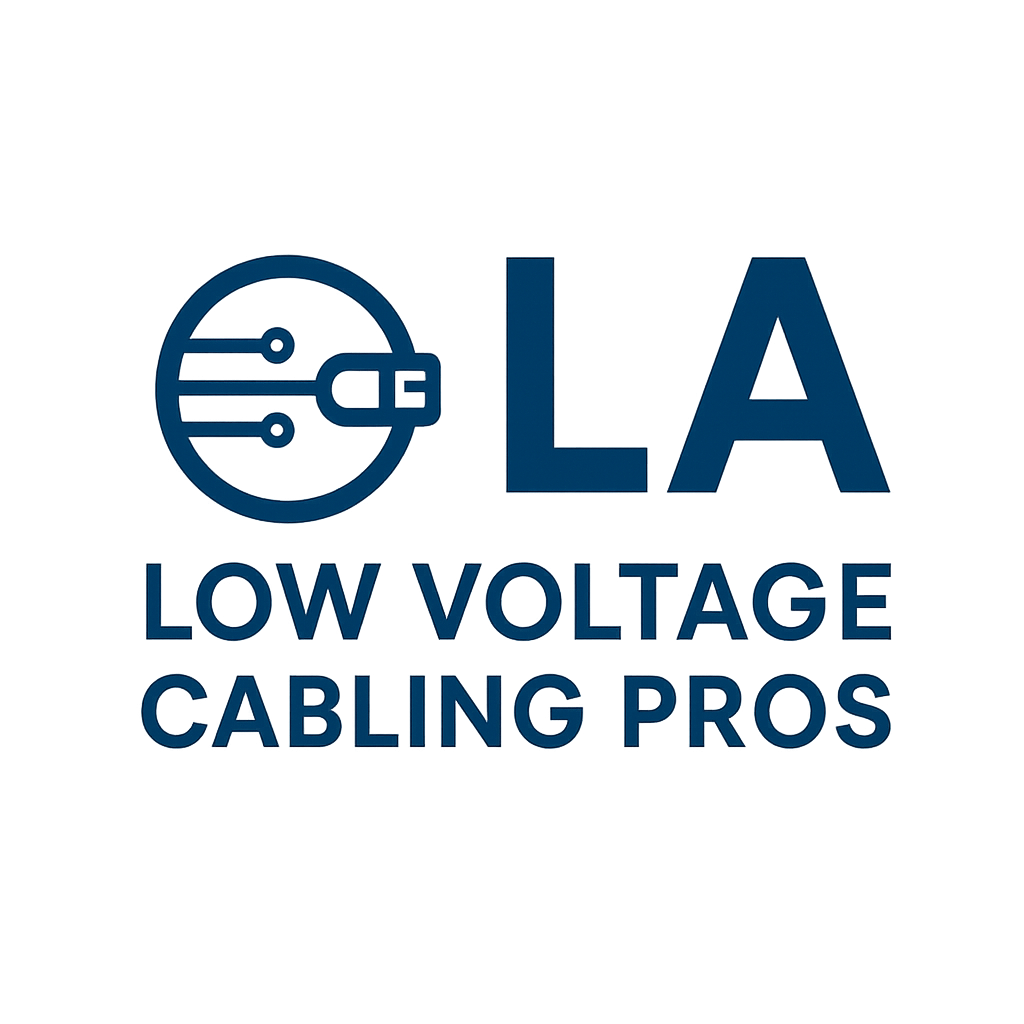Structured Cabling Certification Standards: Ensuring Reliable and Compliant Network Systems
When it comes to building dependable networks, structured cabling certification standards play a crucial role. Whether you’re installing data networks in an office, school, hospital, or smart home, these standards make sure every cable, connector, and pathway performs at the highest level.
Understanding and following certification standards ensures your network operates smoothly, meets safety regulations, and remains ready for future upgrades. At LA Low Voltage Cabling Pros, we provide expert solutions for businesses and residences looking to upgrade their network infrastructure.
What Are Structured Cabling Certification Standards?
Structured cabling certification standards are a set of guidelines developed by organizations like ANSI, TIA, ISO, and BICSI to ensure that data cabling systems are safe, efficient, and interoperable.
These standards define how network cables should be installed, terminated, and tested. They also set performance benchmarks for bandwidth, interference, and signal strength.
In short, certification standards make sure every cabling project delivers reliable connectivity — from your patch panel to your workstations and devices.
Why Certification Standards Matter
Without proper certification, even high-quality cables can underperform. Adhering to structured cabling standards ensures:
- Consistent performance – All components work together seamlessly.
- System reliability – Networks stay stable under heavy traffic.
- Safety compliance – Meets fire rating, grounding, and separation requirements.
- Easier maintenance – Organized labeling and documentation streamline repairs.
- Future readiness – Supports technology upgrades like 10-Gigabit Ethernet or PoE (Power over Ethernet).
Certified cabling isn’t just about meeting rules — it’s about creating a system that lasts and performs.
The Most Recognized Structured Cabling Standards
Several key organizations have established the standards that define today’s structured cabling systems.
1. ANSI/TIA-568 – Commercial Building Cabling Standard
This is the foundation of modern structured cabling. It specifies performance requirements and installation practices for twisted-pair and fiber optic cabling.
- Defines categories like CAT5e, CAT6, and CAT6A
- Covers horizontal and backbone cabling
- Ensures interoperability among different manufacturers
2. TIA-569 – Pathways and Spaces
Outlines how to design and install physical spaces for cabling, including conduits, cable trays, and equipment rooms. It helps avoid overcrowding and protects cables from damage.
3. TIA-606 – Administration and Labeling
Standardizes how cabling systems should be labeled and documented. Proper labeling makes maintenance, upgrades, and troubleshooting much easier.
4. TIA-607 – Grounding and Bonding
Covers the grounding and electrical bonding of cabling systems, protecting both equipment and personnel from electrical hazards.
5. ISO/IEC 11801 – International Cabling Standard
A global standard similar to ANSI/TIA-568, used in many multinational installations. It ensures uniform performance across different regions and vendors.
6. BICSI Standards and Certifications
The Building Industry Consulting Service International (BICSI) provides professional training and certifications such as RCDD (Registered Communications Distribution Designer) and Technician (TECH).
BICSI guidelines complement TIA and ISO standards, focusing on best practices, project management, and quality control.
The Importance of Cable Testing and Certification
Once installation is complete, the cabling system must be tested and certified to prove compliance with standards. Certified installers use specialized testing equipment to verify:
- Cable continuity and signal strength
- Crosstalk and interference levels
- Data transmission speed and attenuation
- Proper terminations and pinouts
When a network passes all required tests, it receives a manufacturer or third-party certification, confirming that it meets or exceeds structured cabling standards.
Benefits of Working with Certified Installers
Certified network cabling professionals are trained to follow all relevant standards and ensure your system performs at peak capacity. Here’s why that matters:
- Compliance assurance – Avoids costly rework and code violations.
- Warranty protection – Many cable manufacturers require certified installation for warranty coverage.
- High-quality workmanship – Clean, organized, and properly tested cabling.
- Future-proofing – Systems are designed for upcoming technologies and bandwidth demands.
Whether you’re installing a small office network or a multi-floor commercial system, partnering with certified installers ensures long-term reliability.
Common Mistakes When Ignoring Certification Standards
Skipping certification can lead to costly problems down the road. Some common issues include:
- Signal interference due to improper cable routing
- Data loss from poor terminations
- Safety risks from incorrect grounding
- Non-compliance with building codes
- Increased downtime and repair costs
Following certification standards from the start prevents these problems and ensures your network meets professional-grade quality.
Structured Cabling Certification: The Future
As data demands grow, certification standards continue to evolve. The latest updates include:
- Support for higher frequencies (up to 2 GHz for future cabling categories)
- Enhanced testing for PoE to ensure safe power transmission over Ethernet cables
- Fiber optic integration standards for hybrid networks
- Green building compliance to reduce waste and improve energy efficiency
Staying updated with these evolving standards helps your network stay efficient and compliant as technology advances. Certification standards are crucial to ensure proper installation. Learn more about how to plan a network cabling layout for optimal performance and compliance.
Build a Reliable Network with Certified Standards
Your cabling infrastructure is only as strong as the standards behind it. Whether you’re building a new data center, upgrading your business network, or modernizing your smart home, following structured cabling certification standards ensures consistent performance and long-term reliability.
To get the best results, always work with certified professionals who follow ANSI, TIA, and BICSI standards — your network will thank you with faster speeds, less downtime, and full compliance.
